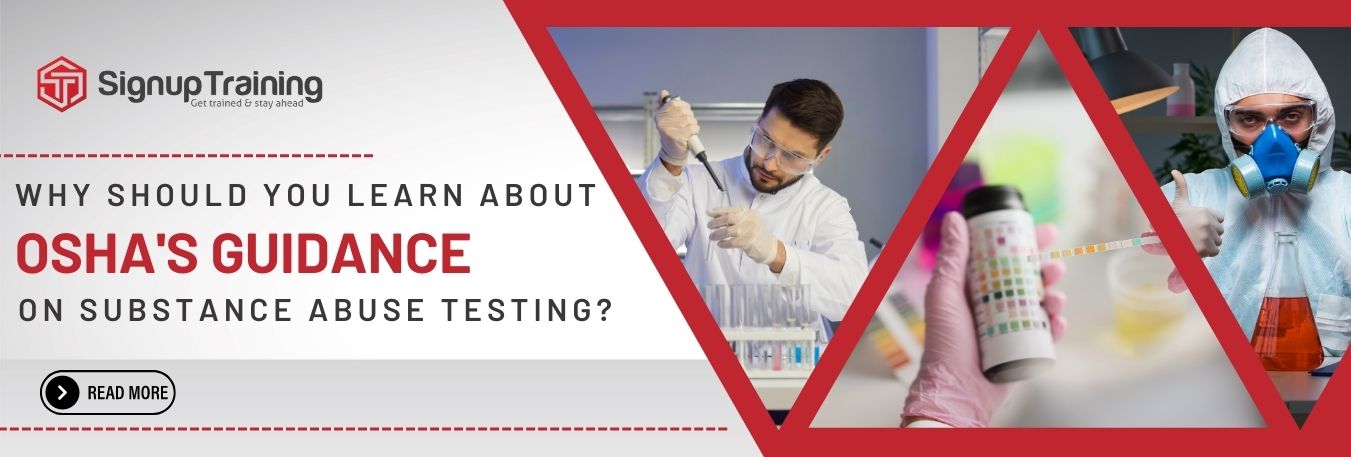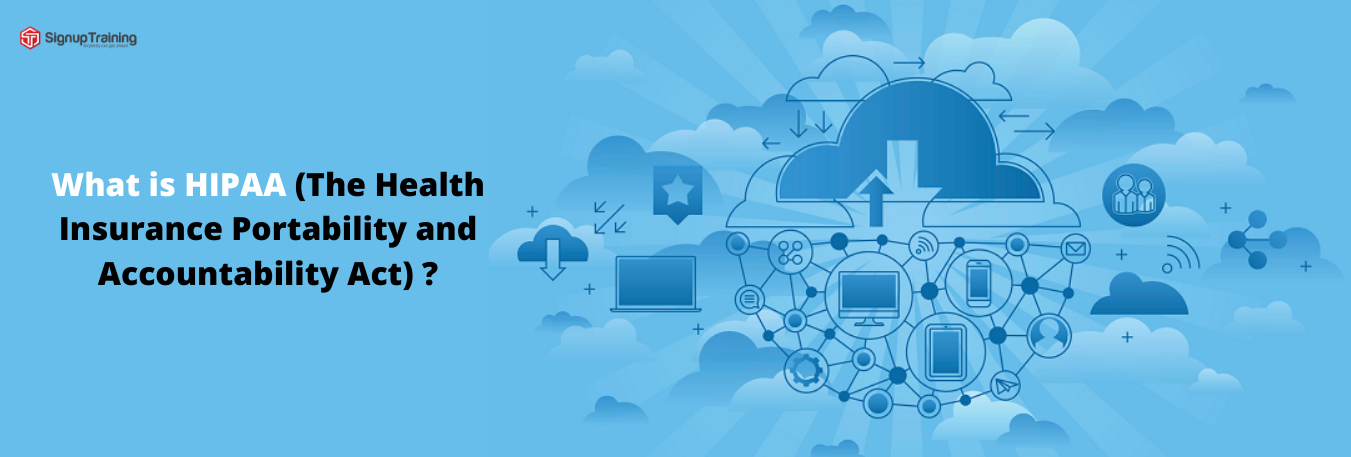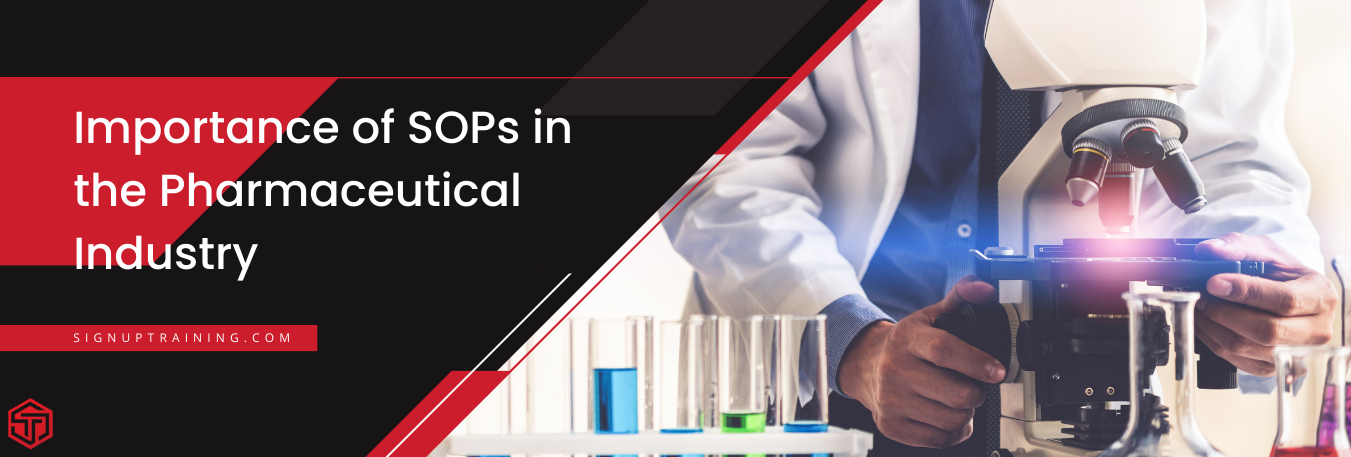Why Should You Learn About OSHA's Guidance on Substance Abuse Testing?

Introduction
In today's fast-paced and safety-conscious work environment, ensuring the well-being and productivity of employees is paramount. One critical aspect that employers must address is substance abuse in the workplace. To regulate and promote safe working conditions, the Occupational Safety and Health Administration (OSHA) provides guidelines on substance abuse testing. In this blog post, we will explore why it is crucial for employers and employees alike to familiarize themselves with OSHA's guidance on substance abuse testing.
1. Promoting Workplace Safety
Safety should always be a top priority in any work setting. Substance abuse in the workplace poses significant risks to employees, their colleagues, and the overall work environment. Accidents, injuries, and errors are more likely to occur when individuals are impaired by drugs or alcohol. By adhering to OSHA's guidance on substance abuse testing, employers can ensure a drug free work environment, protecting both employees and the organization as a whole.
2. Legal Compliance
OSHA's guidelines on substance abuse testing help employers remain compliant with legal requirements. Compliance with OSHA regulations is mandatory for most workplaces, and failure to comply can result in severe penalties, legal consequences, and damage to a company's reputation. Familiarizing yourself with OSHA's guidance ensures that your organization is in line with legal obligations, minimizing the risk of legal troubles.
3. Establishing a Drug-Free Workplace Program
OSHA's guidance on substance abuse testing provides valuable insights into developing and implementing a comprehensive drug-free workplace program. Such programs promote a culture of health, safety, and well-being. By following OSHA's guidelines, employers can establish clear policies, procedures, and educational programs to prevent substance abuse, conduct testing when necessary, and offer appropriate support and resources to employees.
4. Protecting Employee Health
Substance abuse affects not only the individual struggling with addiction but also their colleagues and the work environment as a whole. By implementing OSHA's guidance on substance abuse testing, employers can identify employees who may have substance abuse issues and intervene early, helping them access the necessary support and treatment. Timely intervention can protect employee health, prevent escalation of substance abuse problems, and ultimately save lives.
5. Boosting Productivity and Performance
A workplace affected by substance abuse issues often experiences a decline in productivity and performance. By adhering to OSHA's guidance on substance abuse testing, employers can identify and address problems promptly, ensuring that employees are fit for duty. Substance abuse testing, combined with appropriate treatment and support programs, can lead to a healthier and more engaged workforce, ultimately enhancing productivity and overall organizational performance.
Conclusion
Prioritizing workplace safety and well-being should be a core objective for employers and employees alike. Familiarizing yourself with OSHA's guidance on substance abuse testing is vital for establishing a safe and productive work environment.
By following these guidelines, organizations can proactively address substance abuse issues, protect employee health, and promote a culture of safety. Furthermore, compliance with OSHA regulations ensures legal adherence and minimizes the risk of penalties or legal complications. So, make it a priority to learn about OSHA's guidance on substance abuse testing and take the necessary steps to create a healthier, safer, and more productive workplace for everyone involved.
Trending now

Why do medical devices need FDA approval?
Blog
Top 10 HR Compliance Challenges in USA
Blog
Medical Device Regulations in the USA
Blog
Understanding IEC 62304 & Compliance Tips for Medical Device Software Developers
Blog
What is HIPAA (The Health Insurance Portability and Accountability Act) ?
BlogFDA Steps to Ensure Quality of Foreign Products
Blog
6 Skills that Make for a Great Human Resources Manager
Blog
Why do we have OSHA Regulations?
Blog21 CFR part 11 compliance - key factors that every FDA regulated business should know
BlogWhy is 21 CFR Part 11 Compliance Important?
BlogWhat are the Key Factors (Essentials) for 21 CFR Part 11 Compliance?
BlogFDA Regulated Firms Must Ensure Part 11 Compliance to Generate Accurate and Usable Data
Blog
Know how to Survive an OSHA Audit
Blog
Top 5 Job Opportunities in Biotechnology
Blog
5 Key functions of HR Management
Blog
Cybersecurity Threats Upcoming in 2023
Blog
Why Should You Learn About OSHA's Guidance on Substance Abuse Testing?
Blog
Importance of SOPs in the Pharmaceutical Industry
Blog
Non-Compliance on 1099 Filing: Consequences and Best Practices
Blog
Artificial Intelligence (AI) in Healthcare: A Boon or Bane?
Blog.jpg)
How to Ensure Compliance with the I-9 Form: A Guide for Human Resources
Blog
Effective OSHA Audit Observations and Best Practices
Blog
How to Land Your Dream Job in Accounting: Top Tips and Career Options
Blog
Cultivating Connections: How to Foster a Thriving Culture with Your Remote Workforce
Blog
The Transformative Power of Artificial Intelligence in Biotechnology
Blog.png)
6 Steps to Building an Effective Hazard Communication Program (EHS)
Blog